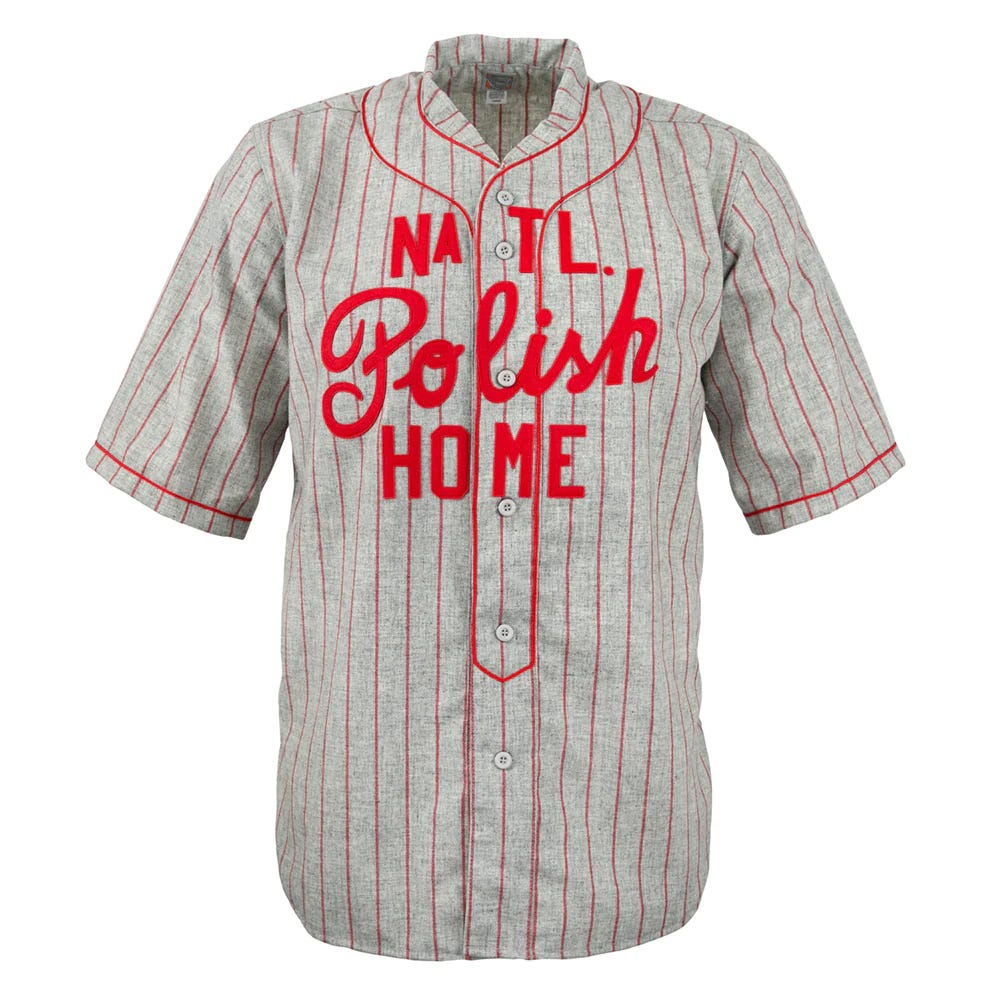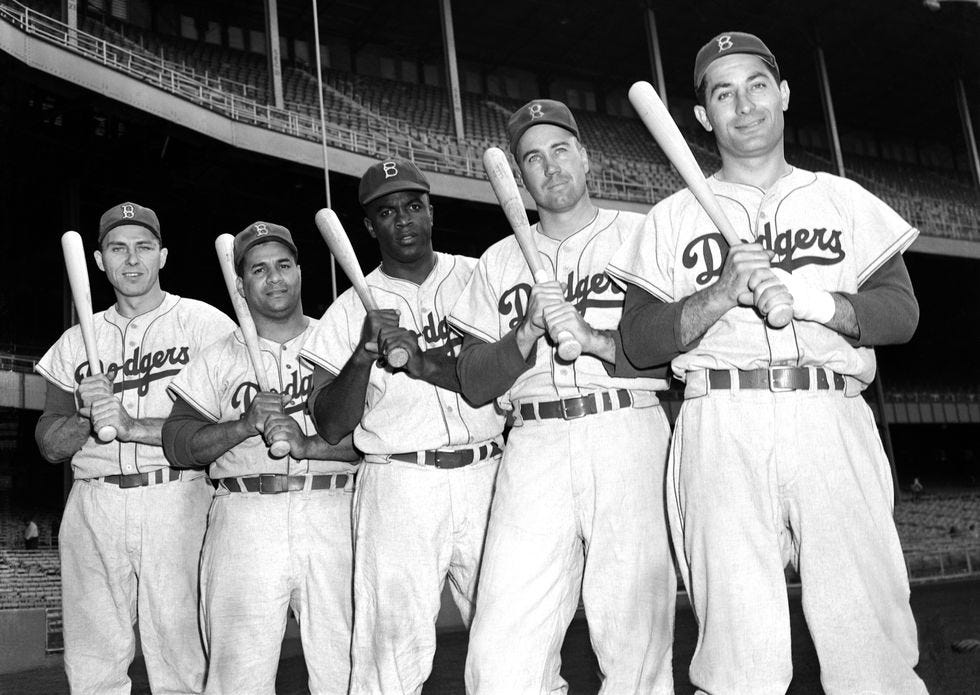Quick update: The Diamond Concierge Service e-mails I’ve been sending out will now be a monthly roundup of good books, movies, sales, whatever for paid subscribers only. The Book Club announcement is coming next week, and the first Melt merch drop is coming. So if you’re so inclined, sign up for a membership at a discount.
I have my own baseball schedule. Pitchers and catchers report, then I dial up the soothing tones of John Chancellor narrating the history of America’s Pastime presented by Ken Burns. I’ll watch the original run of Baseball episodes until around mid-April, then wait a week or two, and usually start paying attention to the season that’s already in progress around the start of May. Early-season baseball depresses me. Between trying to figure out what sort of outerwear I’m supposed to put on day by day, to the fact that the season takes half of the year to run its course, I’m fine waiting until the season is well underway to pay any attention.
But this year is a little different. Even though I’m fully locked into basketball from here until the Finals are over like I am every April through June, I can’t stop checking in on baseball news. The issue is that what I’m interested in has very little to do with box scores or standings, but the little—potentially huge—dramas unfolding. The whole Shohei Ohtani thing is fascinating to gawk at. But as Alex Shepard at the New Republic pointed out the other day, it shines a light on a growing problem taking place all over America with sports betting turning into something as easy as finding a song on Spotify or buying detergent on Amazon. Given the number of epidemics that we’re currently in the middle of that have no end in sight, it’s scary to watch Americans willingly walk right into another in real time.
The other big piece of baseball news I’ve been watching seems small compared to gambling addiction. The crap quality official uniforms designed by Nike and produced by Fanatics that made their debut this season shouldn’t be a huge concern to anybody but the ballplayers that have to wear them. And yet, it points to something larger. Despite all the reports of its declining popularity, and Major League Baseball’s attempts to “speed up the game” that only serve to make the experience of watching the game less enjoyable, the uniforms speak to something that goes beyond the sport.
The new uniforms aren’t great to look at. Amanda Mull at The Atlantic pointed out, “It’s hard to dismiss the aesthetic complaints, especially when you compare the new jerseys with those of previous seasons. The new ones look tawdry and a little swagless, like replica jerseys.” My own initial reaction to seeing them reminded me of being a kid and getting a bootleg Frank Thomas White Sox jersey at the Swap Shop in Ft. Lauderdale when I was 11. I knew it wasn’t authentic, but that didn’t bother me. What wasn’t great was when I wore the jersey to school a few days later and a kid pointed out that the number on the back, 36, was wrong. Thomas wore 35. Also, his name was spelled “Tomas.” I’d still be embarrassed letting that one get past me, but I believe it taught me at an early age that copyediting wasn’t going to be my strong suit.
The declining aesthetics of baseball do take a lot away from the game. I could go on about how I want a ballgame to have a certain pace. I like the brief respite and also maybe the head games that go into a pitcher taking their sweet-ass time throwing the ball over the plate, and the whole ghost runner in the extra innings thing drains feels unnecessary. But the uniforms are part of a bigger problem beyond baseball. Whether the viewers are currently there or not, it’s still America’s Pastime, and that term should still mean something. So when I switch on a game and see a player’s underwear showing through their pants, massive sweat stains covering the jersey, or mismatched tops and bottoms, I can’t help but think this is part of an acceptance of decline. Not only do the athletes who get paid crazy amounts of money to play baseball look terrible in these jerseys, but we’re just going to go ahead and buy them because that’s how we show support for the home team.
I love baseball jerseys. Two summers ago I wrote an ode to them at GQ, about how they’re forever cool in the summertime, and that finding a cool vintage one is always a happy surprise. I tend to wear them with shorts, but I’ve also got a couple of those thicker wool suckers that Ebbets Field lovingly reproduced that are nice to wear towards the end of the season when the air starts getting chilly. When it comes to buying them second-hand, I don’t honestly mind the cheaper versions, the old mesh jerseys from the 1980s, or the bootleg Ken Griffey Jr. Mariners jersey I found for 15 bucks a few years ago. What bothers me is the quality of the jerseys we see ballplayers in today, and how it’s just another example of things being made on the cheap, then marked up and sold to the public at prices likely a dozen times more than the thing cost to make. The powers that be have tried to speed baseball up, and the fast fashioning of the uniforms seems part of that trend.
We’re already drowning in cheaply-made, low-quality clothing that goes right from some foreign factory where workers’ rights are about as poor as the pay to the store to the consumer and, not long after whatever new trend rolls in, the landfill heap. As Drew Magary pointed out in a Defector column of his from last year that was a battering of Fanatics owner Michael Rubin right from the headline, Rubin “made it easy for leagues to turn around swag quickly (although not always) and cheaply; he took a manufacturing load off of Nike’s back; and then he threw a shitty white party to celebrate.” Magary wrote of his attempt at finding a jersey to wear that was better quality than the league-designated ones but at a lower price. He found them through a “Chinese e-commerce middleman that is shady as all fuck,” but they cost $30, while the Fanatics version was $100. Even Magary was surprised by the results. “The collars were a little wonky, but they had real numerals, real name plates, proper stitching, and real mesh. They were made in Honduras, just as my Fanatics jersey was, and yet they were light years ahead of Fanatics in terms of quality.”
Isn’t there something sad about all this? Can’t we have some nice things anymore? Sure, sports fandom can be a little nuts. I’m guilty of it myself from time to time. But there is just something so demeaning about turning on a baseball game and watching the players run around in these cheap uniforms. It’s almost akin to paying a bunch of money to pay for an airline ticket so you can be treated like cattle for the experience or watching a beautiful old building get torn down so an expensive box made of glass can go up in its place. The idea is that you’re likely going to have your heart broken by baseball. That’s just how the game is designed. If you’re a true fan and not like me, you start in the chilly part of spring, go all the way through the summer, then end up in the autumn where your team either is in the playoffs or they were likely eliminated from the post-season weeks earlier. Then, if your team is good enough to make it to the World Series and they lose, you’re faced with trying to remember what you missed out on because you were so obsessed with the hope of winning. Baseball is heartbreaking, and that’s part of its allure. It shouldn’t be depressing and another sign of our continued acceptance of decline.






